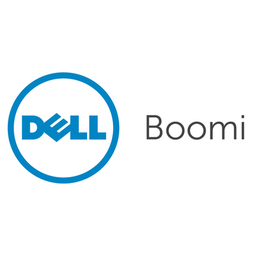Download PDF
Cloud Approach Increases Productivity, Lowers TCO

Technology Category
- Platform as a Service (PaaS) - Data Management Platforms
Applicable Industries
- Electronics
The Challenge
Renesas Electronics America (REA)'s on-premises, legacy integration system required a manual process of custom coding by an on-site expert and was costly and complicated. REA needed to replace the existing system. In addition, due to relocation, REA wanted to move the data center to the cloud.
The Customer
Renesas Electronics America (REA)
About The Customer
Renesas Electronics America (REA) is a wholly owned subsidiary of Renesas Electronics Corporation, the world’s largest manufacturer of microcontrollers and the second largest manufacturer of application processors.
The Solution
Dell Boomi AtomSphere provided a cloud-based solution at a fraction of the cost of the company’s previous legacy system and also helped REA increase agility. REA used Dell Boomi AtomSphere integration platform as a service (iPaaS) to integrate data from its U.S. based HRIS system to Japan each day into the SAP system and global directory management systems.
Operational Impact
Quantitative Benefit
Related Case Studies.

Case Study
Remote Temperature Monitoring of Perishable Goods Saves Money
RMONI was facing temperature monitoring challenges in a cold chain business. A cold chain must be established and maintained to ensure goods have been properly refrigerated during every step of the process, making temperature monitoring a critical business function. Manual registration practice can be very costly, labor intensive and prone to mistakes.

Case Study
Cloud Solution for Energy Management Platform-Schneider Electric
Schneider Electric required a cloud solution for its energy management platform to manage high computational operations, which were essential for catering to client requirements. As the business involves storage and analysis of huge amounts of data, the company also needed a convenient and scalable storage solution to facilitate operations efficiently.

Case Study
Leveraging the IoT to Gain a Competitive Edge in International Competition
Many large manufacturers in and outside Japan are competing for larger market share in the same space, expecting a growing demand for projectors in the areas of entertainment, which requires glamor and strong visual performance as well as digital signage that can attract people’s attention. “It is becoming more and more difficult to differentiate ourselves with stand-alone hardware products,” says Kazuyuki Kitagawa, Director of Service & Support at Panasonic AVC Networks. “In order for Panasonic to grow market share and overall business, it is essential for us to develop solutions that deliver significant added value.” Panasonic believes projection failure and quality deterioration should never happen. This is what and has driven them to make their projectors IoT-enabled. More specifically, Panasonic has developed a system that collects data from projectors, visualizes detailed operational statuses, and predicts issues and address them before failure occurs. Their projectors are embedded with a variety of sensors that measure power supply, voltage, video input/ output signals, intake/exhaust air temperatures, cooling fan operations, and light bulb operating time. These sensors have been used to make the projector more intelligent, automatically suspending operation when the temperature rises excessively, and automatically switching light bulbs. Although this was a great first step, Panasonic projectors were still not equipped with any capability to send the data over a network.








